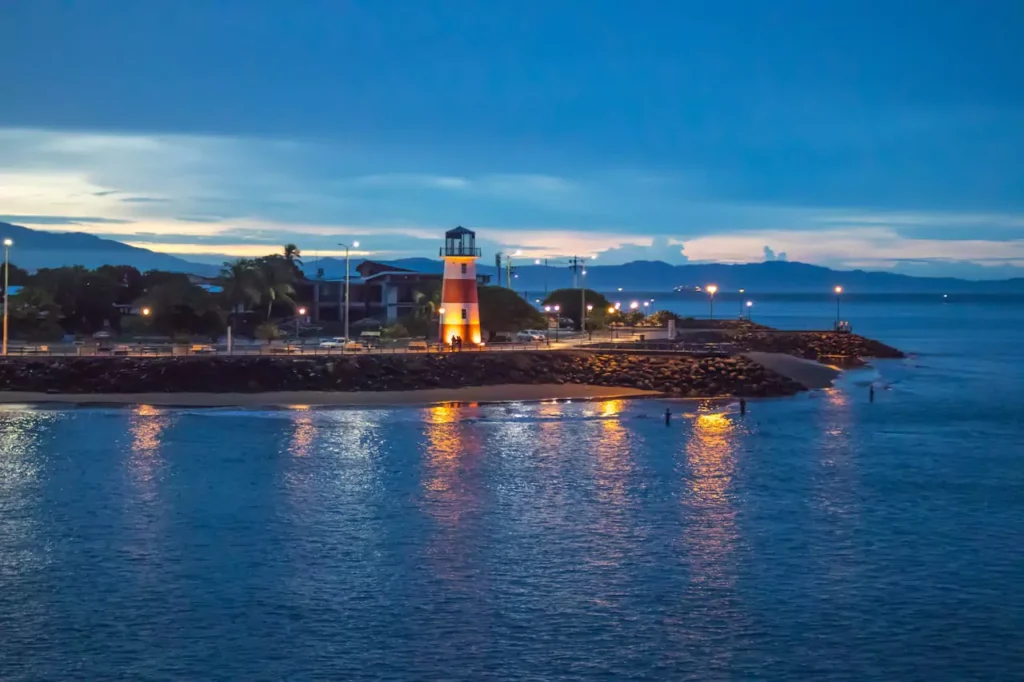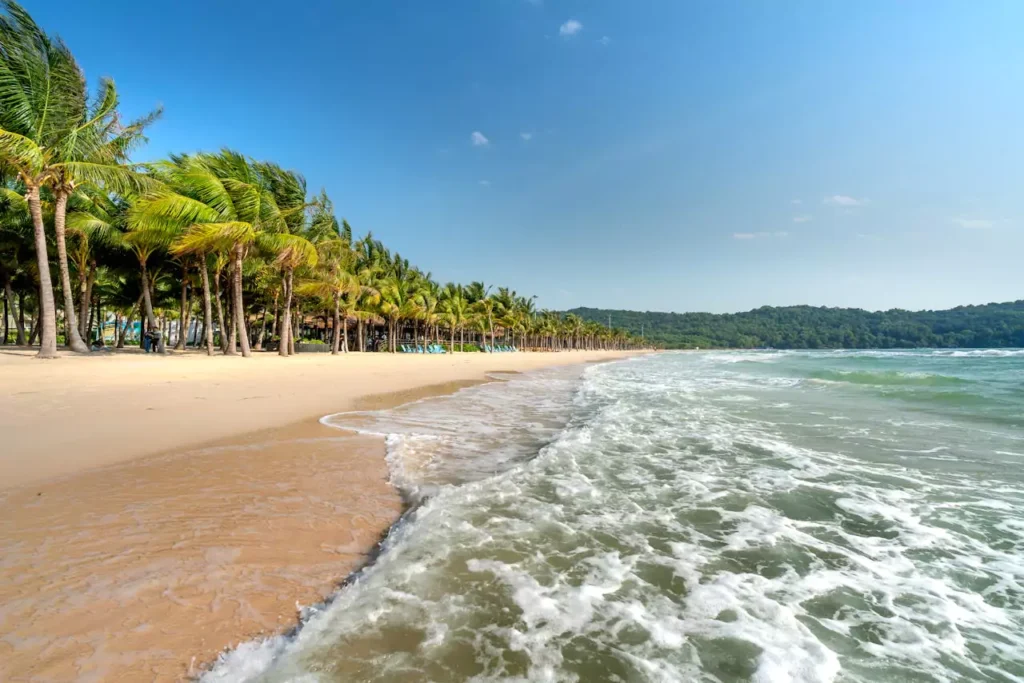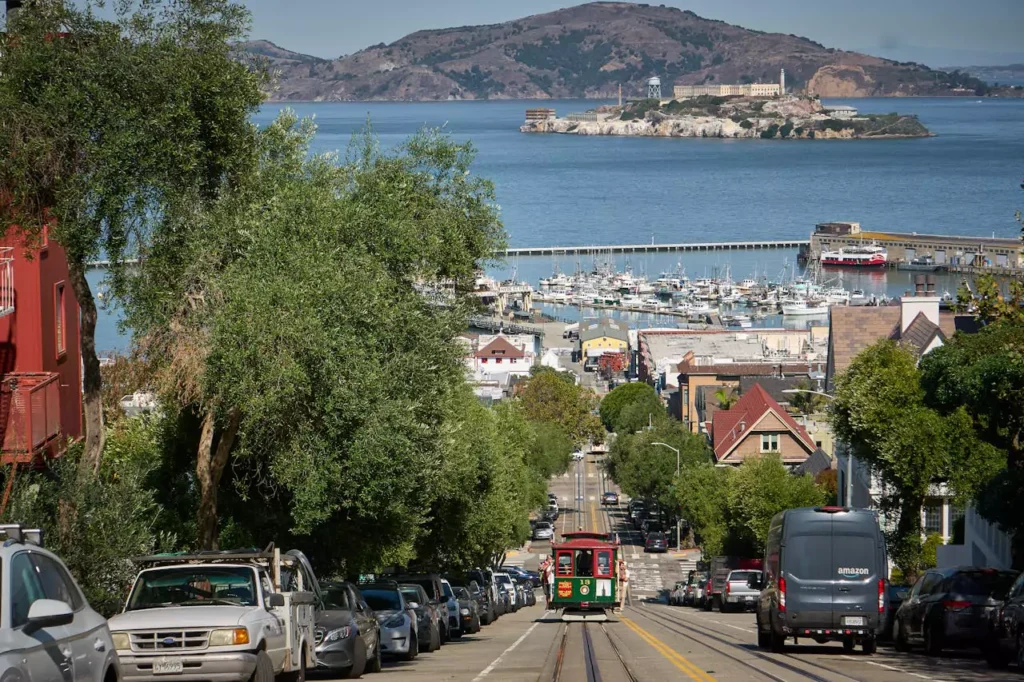Welcome to Paradise with Peace of Mind
When you imagine Costa Rica, you probably picture lush rainforests teeming with life, pristine beaches, and the soothing sound of waves crashing on the shore. The vibrant wildlife, warm culture, and unparalleled natural beauty make it a dream destination for many. But as you plan your getaway, it’s only natural to wonder: Is Costa Rica safe to travel? The good news is that Costa Rica has earned a stellar reputation as one of the safest travel destinations in Central America. This guide will provide you with all the tips and insights you need for a secure and enjoyable trip.
Table of Contents
Why Choose Costa Rica for Your Next Vacation?
A Haven for Eco-Tourism
Costa Rica stands out as a global leader in eco-tourism, drawing travelers who value sustainability and nature. The country has dedicated over 25% of its land to national parks and reserves, offering visitors a unique opportunity to connect with unspoiled natural beauty. Explore the cloud forests of Monteverde, where mist shrouds towering trees and rare wildlife thrives. For beach lovers, Manuel Antonio National Park combines pristine shorelines with lush rainforests, home to playful monkeys and vibrant tropical birds. Costa Rica’s commitment to preserving its ecosystems ensures that every visit contributes to a larger mission of environmental conservation.
A Politically Stable Nation
Costa Rica’s political stability is a cornerstone of its appeal. Since abolishing its military in 1948, the nation has redirected resources toward education, healthcare, and environmental protection. This focus has fostered a peaceful society and earned the country recognition as one of the most progressive in the region. Travelers benefit from this stability, enjoying a safe and welcoming environment that encourages exploration and adventure. Costa Rica’s peace-centric policies make it a shining example of how a commitment to progress can enhance the travel experience.
Friendly Locals
The people of Costa Rica, affectionately known as Ticos, are integral to the country’s charm. Known for their warmth and hospitality, Ticos embody the spirit of “Pura Vida,” a phrase that translates to “pure life” but represents a lifestyle centered on happiness, simplicity, and appreciation for life’s blessings. Whether you’re navigating a bustling market, enjoying a local meal, or seeking directions, you’ll find locals eager to share their culture and ensure you feel at home. This genuine friendliness enriches every visitor’s experience, leaving lasting impressions.
International Recognition
Costa Rica’s global accolades speak volumes about its allure. The nation consistently ranks among the happiest countries in the world and is a leader in sustainability efforts. Its safety record further enhances its reputation, making it a preferred destination for families, solo travelers, and adventurers alike. The combination of environmental stewardship, political stability, and a welcoming culture ensures that Costa Rica stands out on the global stage as a destination worth visiting.

Is Costa Rica Safe for Tourists? A Reality Check
General Safety Overview
Costa Rica boasts lower crime rates than many other Central American countries, making it a relatively safe destination for travelers. Violent crimes are rare, and most safety concerns involve petty theft in tourist hotspots such as beaches, markets, and bus stations. Simple precautions, such as keeping valuables out of sight and staying vigilant in crowded areas, can significantly reduce risks. Overall, a little awareness goes a long way in ensuring a safe and enjoyable trip.
Government Efforts to Protect Tourists
The Costa Rican government places high importance on the safety of its visitors. Popular tourist destinations are often patrolled by dedicated tourist police, providing an additional layer of security. The country has also implemented strict safety measures in national parks, hiking trails, and beaches, such as clear signage, lifeguard services, and emergency response systems. These proactive measures reflect Costa Rica’s commitment to maintaining its reputation as a safe and welcoming destination for travelers from around the world.
Top Travel Safety Tips for Costa Rica
Staying Safe in Cities
While Costa Rica’s cities are generally safe for tourists, it is essential to remain cautious, particularly in urban areas such as San José. Here are some practical tips to enhance your safety:
- Avoid Wandering Alone at Night: Stick to familiar areas and avoid exploring unfamiliar neighborhoods after dark. Group travel is always safer.
- Stay in Well-Lit Streets: Choose streets that are well-lit and frequented by both locals and tourists. Steer clear of isolated areas, even in daylight.
- Opt for Registered Transportation: Use only registered taxis or reputable ride-sharing apps for getting around. Avoid hailing taxis off the street.
- Stay Aware of Your Surroundings: Be mindful of what is happening around you, especially in crowded places where pickpocketing might occur.
Protecting Your Belongings
Petty theft is not uncommon in popular tourist spots and crowded areas. To minimize risks:
- Secure Your Belongings: Carry a crossbody bag with zippers or an anti-theft backpack to protect your belongings.
- Avoid Displaying Valuables: Keep items like jewelry, watches, and expensive electronics hidden from view.
- Use Hotel Safes: Store passports, extra cash, and other valuables in your hotel’s safe whenever possible.
- Travel Light: Bring only the essentials when heading out to reduce the risk of loss.
Safety on Roads
Costa Rica’s roads can be a mix of smooth highways and challenging rural routes. Travelers renting vehicles should take extra precautions:
- Choose Reputable Rental Companies: Ensure the rental vehicle is well-maintained and suitable for the terrain you plan to explore.
- Drive with Caution: Roads in rural areas often have potholes, narrow lanes, and occasional wildlife crossings. Keep your speed controlled and stay alert.
- Avoid Night Driving: Limited street lighting and unexpected obstacles make night driving more hazardous. Plan your journeys during daylight hours.
- Understand Local Traffic Laws: Familiarize yourself with Costa Rica’s driving regulations, including seat belt requirements and speed limits.
Beach and Water Safety
Costa Rica’s beaches are a major draw for visitors, but they can also pose certain risks:
- Be Aware of Rip Currents: The Pacific coast is particularly known for strong rip currents. Pay attention to posted warnings and avoid swimming in flagged areas.
- Stick to Designated Swimming Zones: Swim in areas monitored by lifeguards and avoid venturing too far from the shore.
- Follow Lifeguard Instructions: Always heed advice and warnings from local lifeguards.
- Monitor Weather Conditions: Sudden tide changes or storms can make swimming unsafe. Review the weather forecast prior to going to the beach.
Wildlife and Nature Safety
Costa Rica’s diverse wildlife is a highlight of any trip, but it’s vital to interact with nature responsibly:
- Maintain a Safe Distance from Animals: Resist the temptation to feed or touch wildlife. Even friendly-looking animals can become aggressive.
- Stick to Marked Trails: When hiking, follow designated paths to reduce the risk of encounters with snakes, insects, or other potentially harmful creatures.
- Use Insect Repellent: Protect yourself from mosquito bites, especially in rainforest areas, to prevent diseases like dengue or Zika.
- Wear Appropriate Gear: When trekking or exploring, wear sturdy shoes and long pants to protect against bites and scratches.
Additional General Safety Tips
- Stay Updated: Regularly check local news and weather reports.
- Emergency Contacts: Save the numbers for local emergency services, your embassy, and your accommodations.
- Travel Insurance: Secure comprehensive coverage for medical emergencies, theft, and trip cancellations.
- Health Precautions: Stay hydrated, use sunscreen, and be mindful of heat exhaustion when exploring.
By following these safety tips, you can enjoy the beauty and adventure Costa Rica has to offer while minimizing potential risks.

Best Practices for a Safe and Enjoyable Trip
Traveling is one of life’s most rewarding experiences. However, to ensure your trip is both safe and enjoyable, it’s important to adopt a few best practices. Proper planning, staying connected, and preparing for emergencies can make all the difference. Here’s how to make sure your trip goes without a hitch.
Research Before You Go
Preparation is key to a stress-free trip. Knowing what to expect at your destination allows you to avoid surprises and make informed decisions.
Familiarize Yourself with Local Customs and Laws
Each country has its own set of traditions and legal norms. Taking the time to understand these will help you avoid unintentional offenses and ensure you’re respectful of the local culture.
- Research etiquette, such as how to greet people and proper dress codes.
- Learn about any legal restrictions, such as prohibited items or activities.
Keep Copies of Important Travel Documents
Losing essential documents like your passport can quickly turn into a nightmare.
- Make physical and digital copies of your passport, visa, and travel insurance.
- Store these copies in different locations, such as your luggage and an online cloud service, for easy access.
Understand the Local Currency
Handling money abroad can sometimes be tricky.
- Research the exchange rate and get acquainted with the local currency to prevent overpaying or falling victim to scams.
- Bring a combination of cash and cards for added convenience. Ensure your card works internationally, and notify your bank about your travel plans to prevent unexpected blocks.
Stay Connected
Staying in touch with loved ones provides both security and peace of mind. It also ensures you’re reachable in case of emergencies.
Share Your Itinerary
Having someone back home who knows your plans can be a lifesaver if something goes wrong.
- Share your detailed itinerary, including accommodation details and flight schedules, with a trusted friend or family member.
- Check in with them periodically to confirm your safety.
Stay Online with a Local SIM or Wi-Fi Device
Access to the internet helps you navigate new places and stay informed.
- Purchase a local SIM card upon arrival to enjoy cheaper rates on calls and data.
- Alternatively, invest in a portable Wi-Fi device to stay connected across multiple devices without relying on public networks.
- Download essential travel apps, like maps and translation tools, for offline use.
Emergency Preparedness
Emergencies can arise unexpectedly, and being prepared can make a significant difference in the outcome. A little forethought can save time and reduce stress.
Memorize Local Emergency Numbers
Different countries have varying emergency hotline numbers. For instance, the emergency number in Costa Rica is 911.
- Save the local emergency number in your phone and memorize it for quick access.
- Keep a small card with emergency numbers, including the nearest embassy, in your wallet.
Ensure Comprehensive Travel Insurance
Proper insurance coverage offers peace of mind.
- Confirm that your travel insurance covers medical expenses, trip cancellations, and emergency evacuations.
- Carry your insurance details with you, including a 24-hour helpline number for immediate assistance.
Locate Nearby Medical Facilities
Knowing where to go in case of a medical emergency is crucial.
- Identify the nearest hospital or clinic upon arriving at your destination.
- Note down their contact details and address.
- If you have specific medical needs, ensure that the facility can accommodate them.
By following these best practices, you can reduce risks and maximize enjoyment on your next adventure. Safe travels!

Areas to Avoid and Safe Travel Zones in Costa Rica
Understanding Risk Zones
Costa Rica is a popular travel destination known for its stunning landscapes and warm hospitality. While it is generally safe for tourists, as with any country, there are areas that require extra caution to ensure a trouble-free experience. Travelers should be aware of potential risks and exercise vigilance, especially in specific zones.
- Urban Precautions in San José
San José, Costa Rica’s bustling capital, is generally safe during the day, but travelers should avoid poorly lit or isolated neighborhoods after dark. Areas like Barrio Amón and La California, popular for their charm during daylight hours, can become less secure at night. Avoid carrying large amounts of cash or displaying expensive items to minimize the risk of theft. - Caution in Limón’s Port Area
The port city of Limón is rich in Caribbean culture but includes regions where petty crime can be a concern. Visitors should remain vigilant, particularly in less touristy parts of the port area. Opt for guided tours and avoid wandering into unfamiliar neighborhoods. - General Safety Tips
In any unfamiliar area, avoid walking alone at night, stay in reputable accommodations, and rely on trusted transportation options like official taxis or ride-hailing apps. Always be cautious of your surroundings and follow local advice for safe travel.
Popular Safe Destinations
While some areas warrant caution, Costa Rica is home to numerous safe and welcoming destinations, making it a haven for tourists seeking diverse experiences. Below are some of the most secure and traveler-friendly locations:
- Tamarindo
This coastal town is a favorite for families and solo travelers alike, thanks to its laid-back vibe and secure environment. Known for its pristine beaches and excellent surf conditions, Tamarindo is ideal for water sports enthusiasts. Visitors can also enjoy eco-friendly tours, wildlife sightings, and vibrant yet family-friendly dining options. - Monteverde
Nestled in the highlands, Monteverde is famed for its lush cloud forests and biodiversity. It is considered one of the safest spots in Costa Rica, offering activities like guided nature walks, zip-lining, and birdwatching. With well-maintained facilities and a focus on sustainable tourism, Monteverde ensures a serene and worry-free experience. - Manuel Antonio
Combining breathtaking beaches and lush national parks, Manuel Antonio is a haven for nature lovers. It features secure accommodations, tourist-friendly infrastructure, and various guided tours to explore its rich wildlife. Visitors can enjoy hiking trails, snorkeling, and encounters with monkeys, sloths, and exotic birds, all within a protected and safe environment.
Proactive Travel Tips
- Choose Reputable Services: Opt for certified guides and transportation companies when exploring Costa Rica’s more remote areas.
- Stay Connected: Keep a charged phone with emergency contacts saved, and consider using travel apps to navigate safely.
- Respect Local Customs: Being mindful of cultural norms and listening to local advice can enhance your safety and overall experience.
By understanding risk zones and prioritizing safe destinations, visitors can enjoy the natural beauty and cultural richness of Costa Rica while staying secure.

What Makes Costa Rica a Safe Haven for Families?
Costa Rica is a favorite destination for families seeking adventure, relaxation, and cultural exploration in a safe and welcoming environment. With its commitment to sustainable tourism, well-developed infrastructure, and focus on safety, the country offers an ideal setting for families to create lasting memories.
Family-Friendly Accommodations
Costa Rica provides a wide range of accommodations tailored to meet the needs of families. From beachfront resorts to eco-lodges in the jungle, there is something for everyone.
- Resorts with Family Amenities
Many resorts feature amenities such as kids’ clubs, babysitting services, and swimming pools designed with safety in mind. These facilities allow parents to relax while children enjoy supervised activities. For example, properties in popular areas like Tamarindo, Manuel Antonio, and Guanacaste often cater specifically to families. - Gated Communities and Rentals
Gated communities and vacation rentals offer added privacy and security. Families can enjoy the comfort of home-like settings with modern conveniences, often surrounded by lush nature. These accommodations frequently include fully equipped kitchens, private pools, and proximity to family-friendly attractions.
Activities for All Ages
Costa Rica’s diverse landscapes and wildlife create the perfect playground for families. Activities are designed to be both fun and educational, ensuring every family member has a memorable experience.
- Outdoor Adventures
Thrilling activities like zip-lining through the rainforest canopy, horseback riding along the beach, and guided hikes in national parks appeal to children and adults alike. Professional guides ensure the safety of all participants while teaching them about the environment. - Wildlife and Nature Experiences
Visiting butterfly gardens, sloth sanctuaries, and sea turtle nesting sites provides unique opportunities to connect with Costa Rica’s incredible biodiversity. These excursions are often led by experts who ensure respectful interactions with nature. - Relaxed Adventures for Younger Kids
Families with younger children can explore tranquil activities such as boat tours through mangroves, visits to animal rescue centers, and swimming in calm beach waters like those in Playa Hermosa or Playa Conchal.
Safe Transportation Options
Navigating Costa Rica is straightforward and secure, with various transportation options that prioritize family safety and comfort.
- Private Shuttles
Private shuttles are a popular choice for families, offering convenience and safety. Drivers are often bilingual, knowledgeable about local areas, and attentive to travelers’ needs, ensuring a stress-free journey. - Guided Tours
Guided tours are another excellent way to explore Costa Rica. They include transportation, professional guides, and pre-arranged itineraries, allowing families to focus on enjoying the experience without worrying about logistics. - Car Rentals for Flexibility
For families seeking flexibility, renting a car is a great option. Roads to major tourist destinations are well-maintained, and GPS navigation apps work reliably. Vehicles with child seats are widely available to enhance safety.
Why Families Love Costa Rica
- Warm and Friendly Locals: Costa Ricans, known as Ticos, are welcoming and helpful, making families feel at home.
- Strong Focus on Eco-Tourism: Costa Rica’s dedication to preserving its natural beauty ensures that families can enjoy pristine environments.
- Low Crime Rates in Tourist Areas: Most popular destinations are well-patrolled, and incidents of crime in these areas are rare.
Costa Rica’s family-oriented accommodations, diverse activities, and secure transportation options make it a true safe haven for families. Whether you’re seeking adventure, relaxation, or educational experiences, Costa Rica offers the perfect blend of fun and safety for all ages.

Cultural Tips to Enhance Your Safety in Costa Rica
Costa Rica’s vibrant culture and friendly locals make it an inviting destination for travelers. Embracing the local customs and understanding cultural norms not only enriches your experience but also enhances your safety by fostering positive interactions with the community.
Embrace the Pura Vida Lifestyle
The phrase Pura Vida (meaning “pure life”) is more than a slogan; it’s a way of life in Costa Rica. It reflects a mindset of positivity, gratitude, and living in the moment.
- Respect Local Customs
Ticos are famous for their friendly and hospitable demeanor. A friendly attitude and respect for local traditions go a long way in creating goodwill. Smile often, be polite, and greet people with Buenos días (Good morning) or Buenas tardes (Good afternoon). - Stay Calm and Patient
The Pura Vida philosophy values a relaxed pace of life. Avoid showing impatience or frustration, even if things don’t go as planned. Whether waiting for transportation or dealing with minor inconveniences, maintaining a calm demeanor aligns with the local culture and helps you blend in. - Engage with Locals
Connecting with Costa Ricans can enhance your trip and provide valuable insights about the best places to visit or avoid. Locals are often more than happy to share recommendations and advice when approached respectfully.
Language Tips
While many Costa Ricans, especially in tourist areas, speak English, knowing some basic Spanish phrases can significantly improve your experience and safety.
- Learn Key Phrases
Familiarize yourself with essential Spanish expressions, such as:- Hola (Hello)
- Dónde está…? (Where is…?)
- Necesito ayuda. (I need help.)
- Habla inglés? (Do you speak English?)
- Gracias (Thank you)
- Por favor (Please)
- Use Translation Apps
Apps like Google Translate or offline phrasebooks can be lifesavers in situations where language barriers arise. Practice using these tools in advance to become comfortable with them. - Be Mindful of Local Dialects
Costa Ricans use unique expressions, like Tuanis (cool) or Mae (friend), that reflect their culture. Learning and using these terms appropriately can endear you to locals and show your appreciation for their language.
Additional Cultural Tips
- Dress Modestly in Rural Areas
While beach towns are more relaxed, conservative dress is appreciated in rural areas or smaller towns. This shows respect for local customs and avoids drawing unnecessary attention. - Be Aware of Gestures
Avoid overly expressive gestures that might be misinterpreted. A simple wave or nod is a friendly and safe way to acknowledge someone. - Tipping Etiquette
While not mandatory, tipping for good service in restaurants or tours is appreciated. A 10% tip is customary in most cases.
By embracing the Pura Vida lifestyle, learning a few Spanish phrases, and respecting local customs, you can build trust with the community and enjoy a safer, more immersive experience in Costa Rica.
Costa Rica’s COVID-19 Safety Measures
Costa Rica has taken significant steps to ensure the safety and well-being of both residents and visitors during the COVID-19 pandemic. By adhering to established protocols and remaining informed about current requirements, travelers can enjoy their visit with confidence.
Entry Requirements
To safeguard public health, Costa Rica has implemented entry protocols that may change based on global and local conditions.
- Stay Updated
Before traveling, check the latest information on vaccination and testing requirements through official government websites or your airline. While Costa Rica has relaxed many restrictions, it’s crucial to confirm if proof of vaccination or a negative COVID-19 test is required for entry. - Travel Insurance
Some travel insurance policies are designed to cover COVID-19-related expenses, including medical treatment and accommodations during quarantine. While insurance is no longer mandatory, having a policy can provide peace of mind.
Hygiene Practices
Costa Rica continues to emphasize hygiene and preventive measures to reduce the spread of COVID-19, particularly in crowded areas or tourist hotspots.
- Mask-Wearing
While mask mandates have eased in many areas, wearing masks is still encouraged in crowded indoor spaces such as markets, buses, and airports. Masks may also be required in specific settings, such as healthcare facilities. - Hand Hygiene
Frequent hand washing with soap and water is promoted, and hand sanitizers are widely available in public spaces, hotels, and restaurants. Carrying a personal hand sanitizer is a good practice for when you’re on the move. - Social Distancing
Social distancing is recommended, especially in busy locations like popular tourist attractions, public transportation, and dining establishments. Many venues have restructured layouts to facilitate spacing between visitors.
Enhanced Cleaning Protocols
Hotels, resorts, and tour operators in Costa Rica have adopted rigorous cleaning and sanitization procedures to ensure guest safety.
- Accommodations
Many hotels now follow enhanced cleaning protocols, focusing on high-touch surfaces, communal areas, and guest rooms. Look for accommodations certified by the ICT (Instituto Costarricense de Turismo), which ensures adherence to health and safety standards. - Tours and Activities
Tour operators have adjusted their practices by limiting group sizes, regularly sanitizing equipment, and maintaining cleanliness in transportation vehicles.
Health Resources for Travelers
- Access to Healthcare
Costa Rica’s healthcare system is robust, with many private and public hospitals available to assist travelers. Most major tourist areas are within reasonable distance of a medical facility. - Emergency Contact Information
Save essential contact numbers, such as the local emergency hotline (911) and the Ministry of Health. If symptoms arise during your trip, notify local authorities or your accommodation provider for guidance.
By staying informed and following Costa Rica’s COVID-19 safety measures, travelers can enjoy a safe and worry-free vacation in this beautiful destination.
Conclusion: Your Costa Rica Adventure Awaits
Costa Rica is a country filled with stunning natural landscapes, rich culture, and warm hospitality. From lush rainforests and pristine beaches to rich wildlife and unforgettable adventures, this tropical paradise offers something for everyone.
By taking a few simple precautions and applying the tips shared in this guide, you can confidently answer the question, “Is Costa Rica safe to travel?” with a resounding yes. The country’s commitment to safety, its family-friendly atmosphere, and the warmth of the Ticos ensure that every visitor feels secure and at home.
Are you prepared to begin your Costa Rican journey? Start planning today and join the countless travelers who have fallen in love with this extraordinary destination. The magic of Costa Rica awaits!

